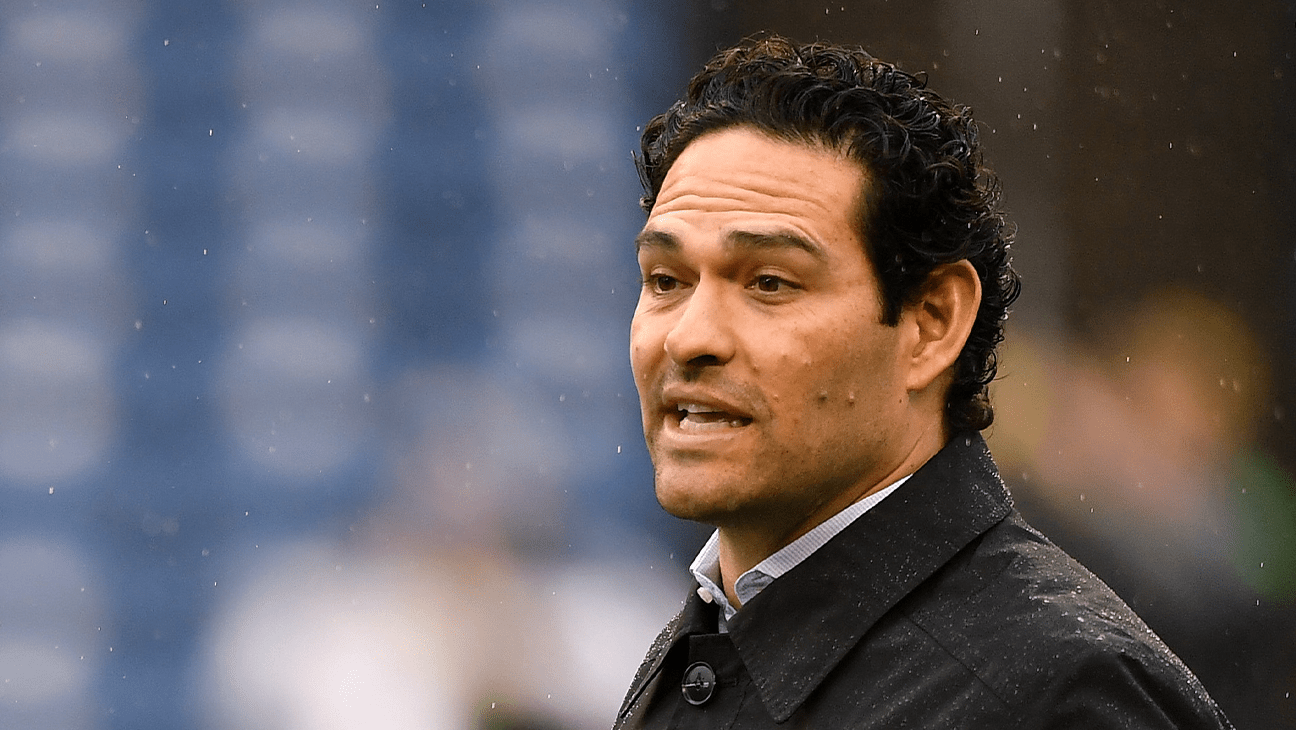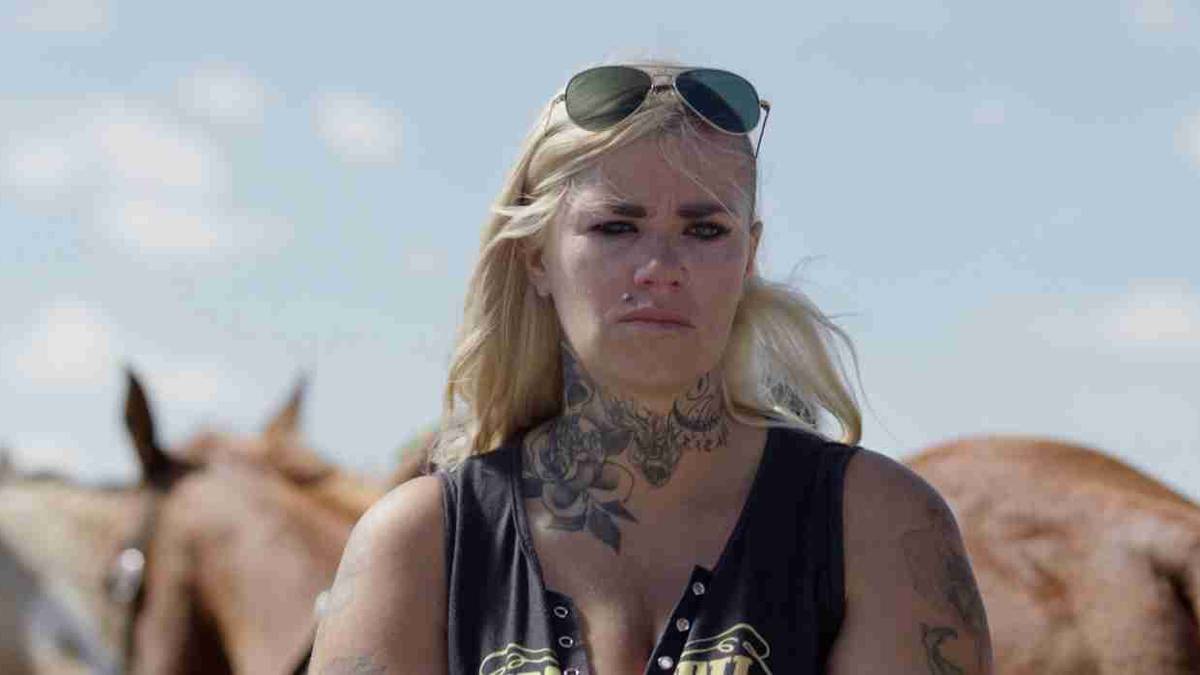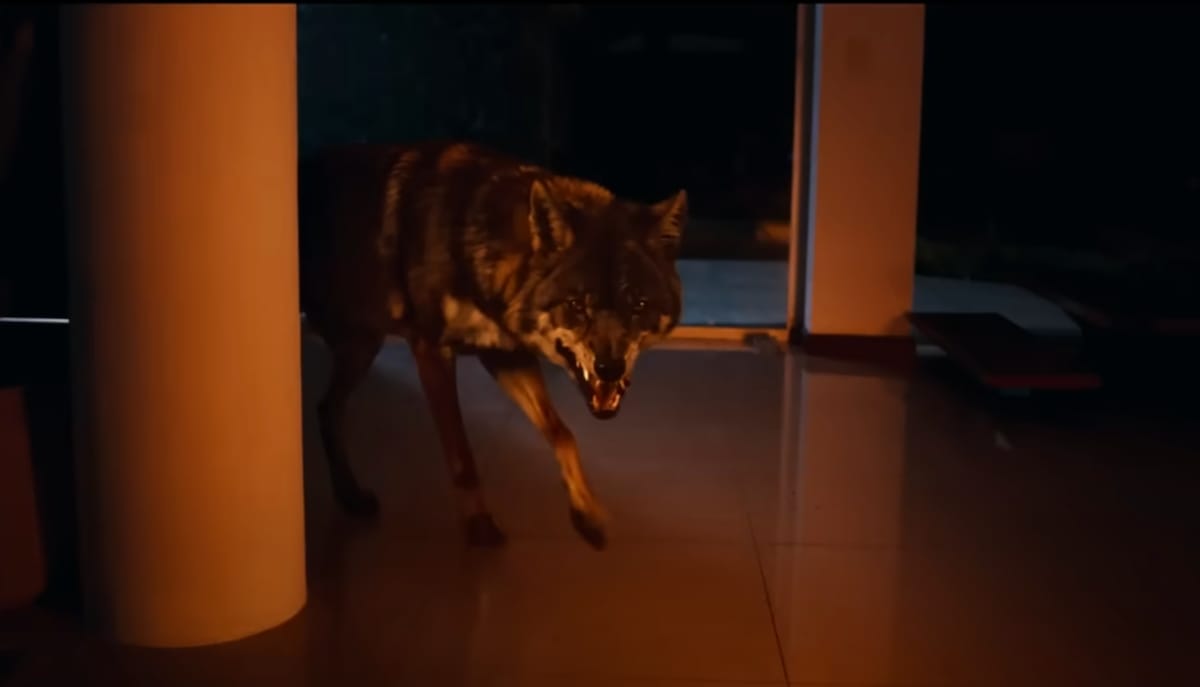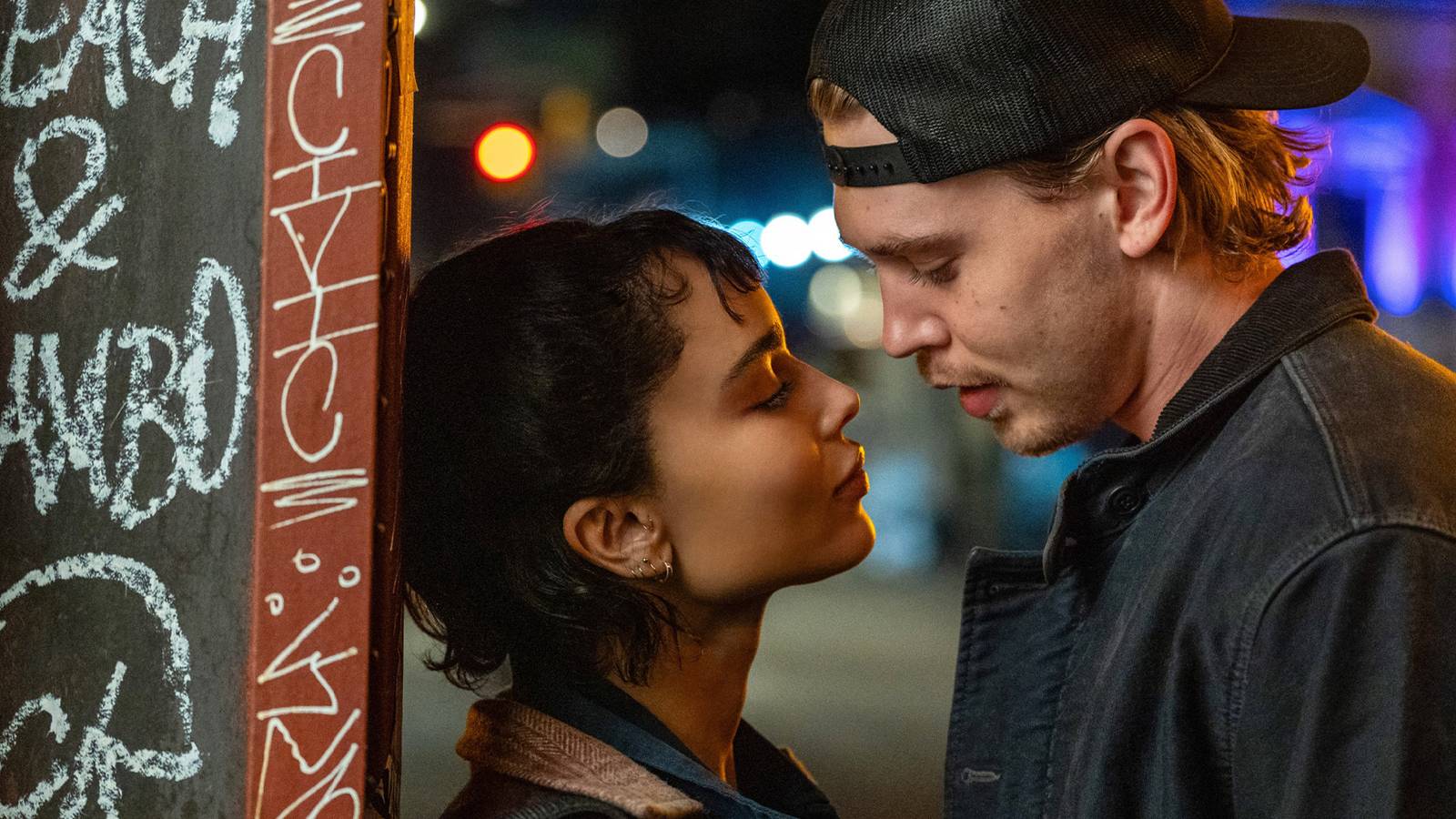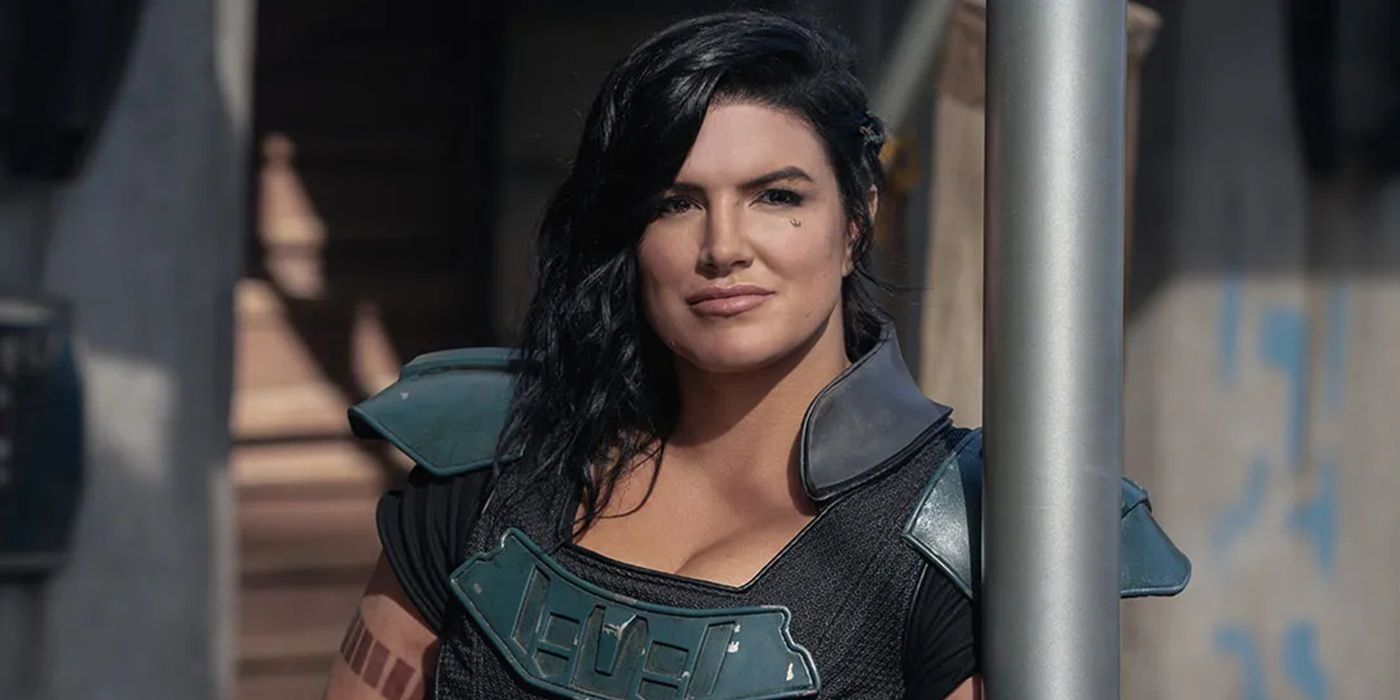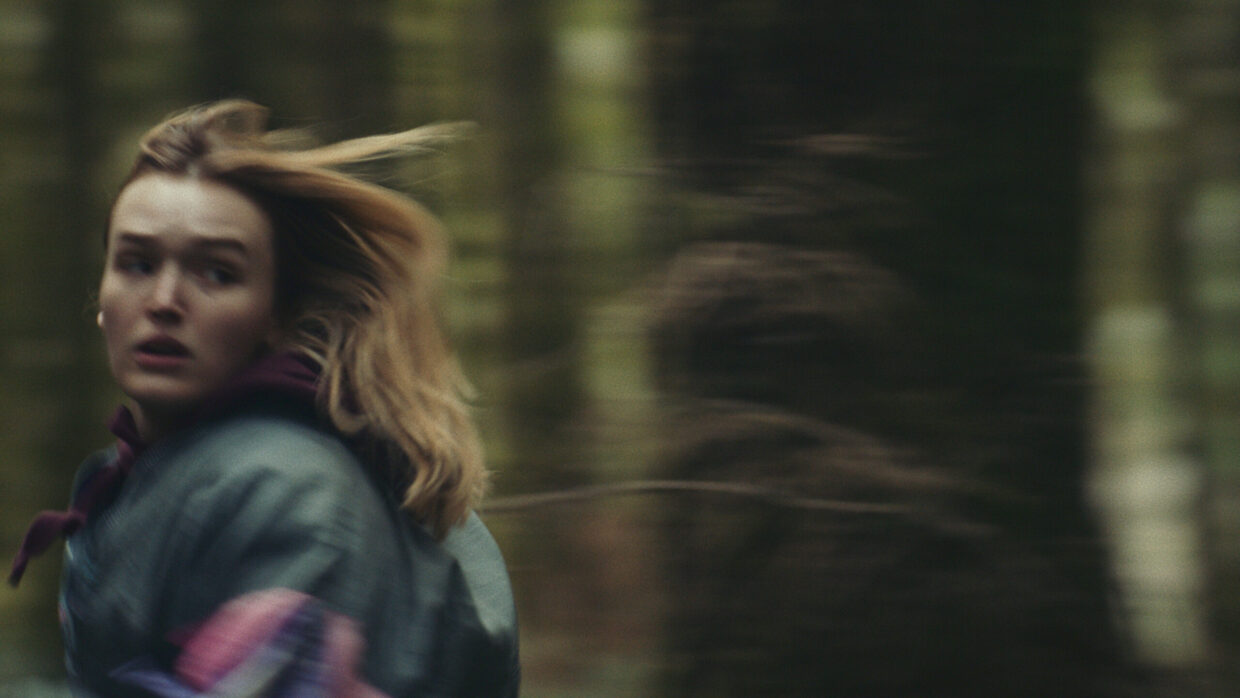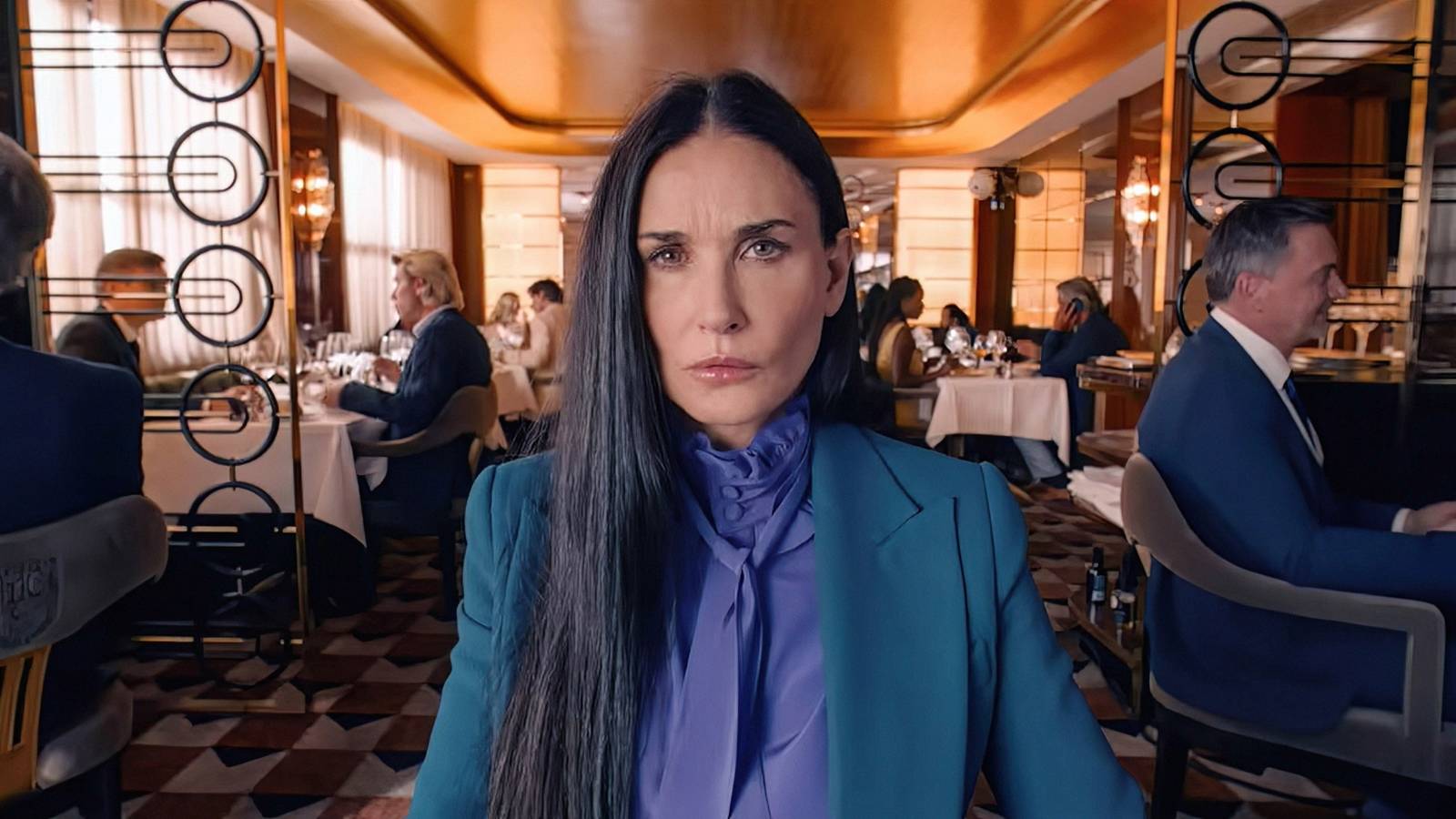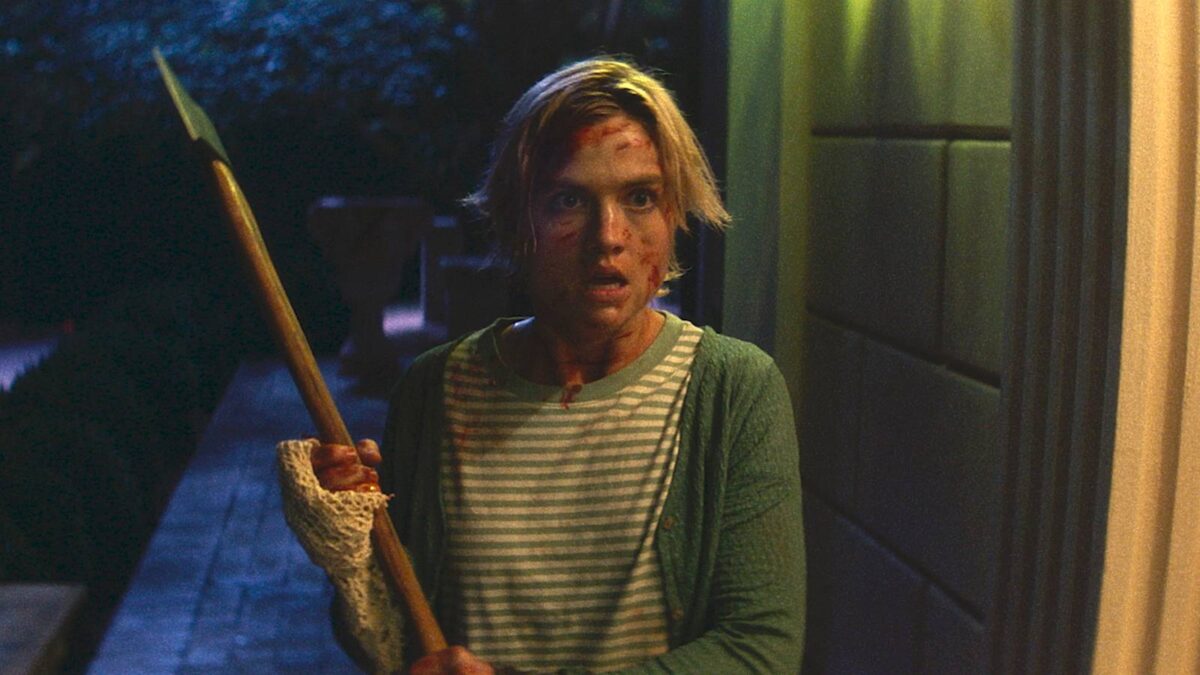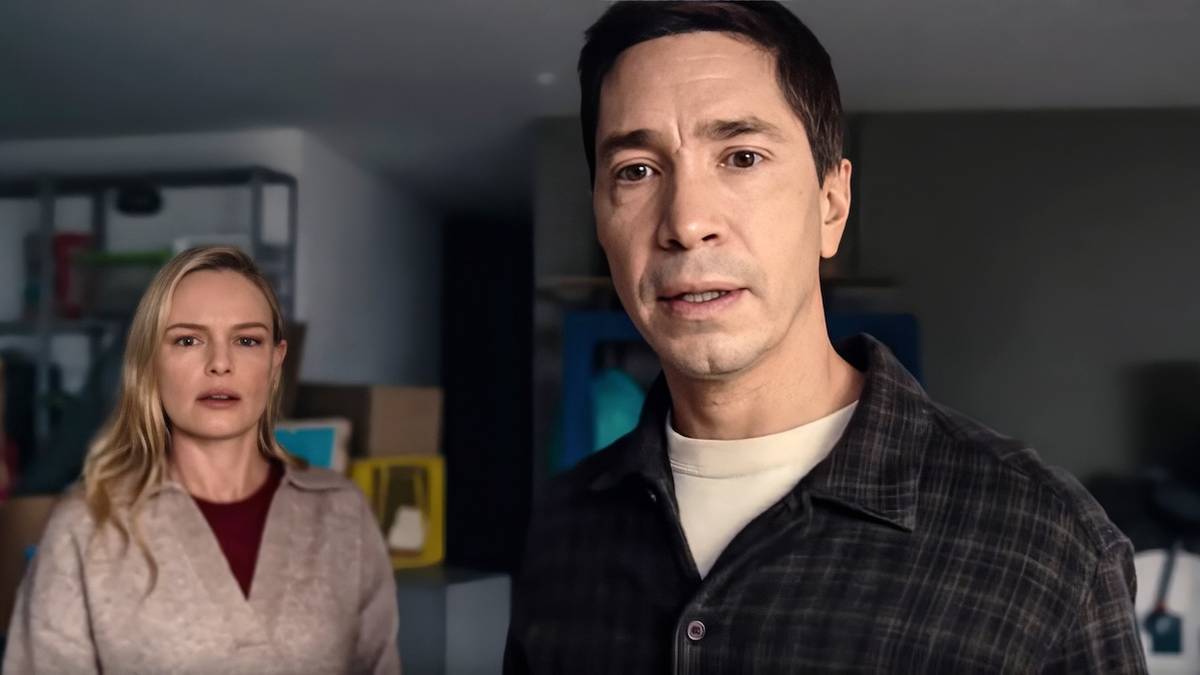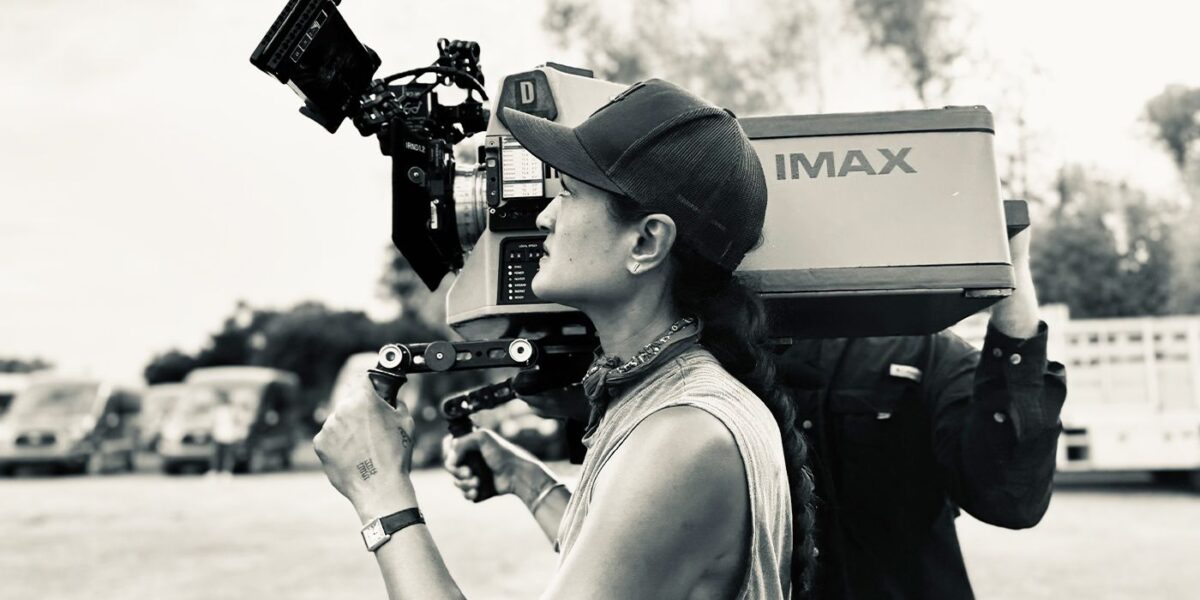
‘Sinners’ Cinematographer Breaks Down The Unique Way She Filmed The Movie [Exclusive]
Apr 25, 2025
Summary
Collider’s Steve Weintraub speaks with cinematographer Autumn Durald Akapaw for Ryan Coogler’s Sinners.
Arkapaw prefers to focus on cinematography over directing, emphasizing collaboration and realism.
They also discuss filming in IMAX and Ultra Panavision formats, capturing visionary sequences like the surreal music montage, and filming Michael B. Jordan as twins.
Sinners marks a visionary new chapter in contemporary cinema once again with boundary-pushing Ryan Coogler in the director’s chair, who creates a visually stunning genre blend unlike anything the filmmaker’s done before, brought to life through the lens of cinematographer Autumn Durald Arkapaw.
Known for her dynamic visual storytelling, Arkapaw brings her signature style to Sinners — moody, immersive, and emotionally resonant. Arkapaw’s background spans fashion films, music videos, and narrative features, including her acclaimed work on Black Panther: Wakanda Forever and various other projects with Coogler. Though she has occasionally stepped into directing — most notably helming the music video for Rihanna’s “Lift Me Up” — her passion remains firmly rooted in cinematography, as she discussed in a recent interview with Collider’s Steven Weintraub.
In the interview, Arkapaw discusses how, with Sinners, starring Michael B. Jordan and Hailee Steinfeld, she embraced the challenge of shooting in both 65mm Ultra Panavision and IMAX formats and how her approach was shaped by close-knit collaboration, practical effects, and a commitment to grounding even the most surreal sequences in realism.
COLLIDER: Before getting into Sinners, I have to ask an important question right up front, which is how the hell did you end up directing Rihanna’s “Lift Me Up”?
AUTUMN DURALD ARKAPAW: That’s all Ryan [Coogler]. I have a heavy background in music videos. I came up shooting them and lots of fashion films. So when the opportunity came up, I remember he called me into his office and said, “I want to ask you if you want to do something.” And I was kind of nervous and curious, “What?” Then he asked me if I wanted to direct the video. I immediately replied, “Yes, of course,” and that was how it went down.
Filming In Multiple Formats for IMAX Optimization
“It is a bigger-than-life format, and it’s a bigger-than-life experience when you shoot with it.”
Image by Eli Adé
I’m sure you did a ton of research about IMAX cameras before the shoot, and I read that you spoke to Hoyte [Van Hoytema], maybe even [Christopher] Nolan, and I’m sure you learned a lot prior to stepping on set, but what were some of the things you learned during the shoot that you wish someone had told you on the first day of filming?
ARKAPAW: That’s a good question. Hoyte and I have the same commercial agent, so I got his number and gave him a call. We have not met in person yet. I’m a big fan of his work, and I hear great things from our mutual friends. He was very forthcoming with advice, but our conversation was more about his love for the format. I could hear in his voice how emotional the experience can be and how very special it is to him. Now that our project is completed, and I’ve gone through that same experience, I understand exactly what he meant. You get very attached to it, because it’s a bigger-than-life format, and a bigger-than-life experience when you shoot with it. It’s very special and I already miss it, which he said too.
You never have enough time to tell the story. It would always be nice to have more time when you make movies, but I wouldn’t say there’s one particular thing that I could have known that would have been better. I had such a great experience on this one, and the whole process was very rewarding. I had a fantastic crew with me, most of whom are people I work with all the time. Our team is like family, and everyone did such an amazing job on this tall order project. All of that shows in the final product, which is a testament to Ryan. He is amazing at building a great team and leading them to victory.
I shot a film directly before Sinners on 16mm. It was great, I was able to get my hands on film again. I haven’t shot a feature on film for a while. On my first feature, I was lucky enough to shoot 35mm. I’ve done some commercials on film in the past 5 years, but it was working with the format directly beforehand that prepared me most for the process again. Even though it’s a big jump from 16mm to 65mm, it still got me in the film mindset again, which was a fantastic experience to revisit. I also worked with Fotokem on The Last Showgirl, so my same colorist, Kostas and I rolled right into this one. My first love has always been film, I’m always trying to make digital look like film.
Related
‘Oppenheimer’ Cinematographer Hoyte van Hoytema on IMAX, Not Using CGI, and Christopher Nolan’s Process
The Director of Photography also discusses what he geeks out over outside of work, what he’d change about IMAX, and shares surprising Nolan insight.
IMAX is my favorite format, and I just love it. The film has 25 minutes of that full frame, IMAX exclusive expanded aspect ratio. Did you debate doing more, or how did you figure out that number?
ARKAPAW: We don’t end up there to meet a number. That number eventually occurs because of Ryan’s choices in the edit with our editor, Michael Shawver. We ultimately shot more than originally planned on IMAX. Our scenes grew after we started using it more and more. Ryan and I definitely fell in love with the format. In prep, there were some scenes we didn’t map out in IMAX because it’s a non-sync sound camera. After we started looking at our dailies and becoming emotionally attached to the format, Ryan decided there were scenes that had heavy dialogue in them that he wanted to turn into IMAX scenes. He had discussions with the actors regarding the sound of the camera, and they decided they would ADR some of those scenes.
Everyone was down for the cause and excited to make it happen. Which is generally the case when Ryan is leading the charge. He does a great job of getting everyone inspired by the craft. One of my favorite sets Hannah Beachler built was the church. We shot that first in Ultra Panavision 70, and then Ryan decided he wanted to shoot the next church scene in IMAX. It’s one of my favorite scenes I’ll ever shoot; that decision will go down in history for me.
One of the things that’s unique, and I don’t even think Nolan does this, is that you used Ultra Panavision, which is the 2.76 aspect ratio, but then you have other scenes that I think are 1.90.
ARKAPAW: The 1.90 ratio is an IMAX exclusive ratio mostly reserved for digital pictures. We shot two formats: 65mm 5 perf in the 2.76:1 Ultra Panavision aspect ratio, and then we also shot 15 perf IMAX in the 1.43:1 aspect ratio. So we extract a 1.90 aspect ratio from the 1.43 15-perf source material for those cinemas that will only be showing a 1.90/2.76 combo. As you know, there are a select number of theaters that show only the full-frame 1.43 IMAX, and the majority of the IMAX theaters across the country will be showing 1.90. On my IMAX ground glass, I had ticks for 2.76, 2.39, 1.90, and 1.43. I always framed our IMAX footage for 2.76, knowing some people might see the film in that aspect ratio only, but we always protected the full 15-perf negative. The result is a central framing that optimizes the IMAX experience.
It’s so interesting. I don’t know if the average person understands this, but people living in New York or LA are basically winning the lottery when it comes to seeing a movie in IMAX.
ARKAPAW: Funny enough, when the tickets went on sale, I made sure my assistant helped me get tickets. I was actually with Ryan at the time. We were shooting a Rod Wave music video for a song on our soundtrack. We were in a follow van doing some car mount shots. I went on my phone and tried to grab tickets to the 70mm screening at CityWalk, and the best seats were sold out within minutes.
Image via Eli Adé
It’s crazy. If you want to see something at the CityWalk, when the tickets drop, you better be refreshing your computer. It’s tough. I wish there were more IMAX 70 millimeter theaters, but I think there are only 10 theaters across the country or the world.
ARKAPAW: We work with David Keighley at IMAX, and he’s told me the numbers a few times. I need to refresh my memory, but yes, it’s a limited amount with 70mm film projection. What format did you watch it in? Was it digital?
I’m sure it was digital. I watched it at the AMC Burbank 16, which is a phenomenal IMAX theater. I love that theater, and it looked amazing, but I don’t think it was film.
ARKAPAW: Yeah, it wasn’t. You saw it in 1.90. If you get a chance, it does make a big difference if you see it in IMAX 1.43, which is taller than 1.90. It’s pretty epic. That’s what’s great about our film, you can see it in multiple formats and have a different experience each time.
Break Down ‘Sinner’s “Surreal Montage” With DP Autumn Arkapaw
“It’s mostly hard for Michael because he has to perform two different characters.”
One of the best sequences in the film is when he’s playing the music, and it’s going through time, and it’s in the barn. The sequence is incredible. Can you talk about filming that sequence? Everyone I know who has seen the movie raves about that scene.
ARKAPAW: It’s nice to see how much it’s resonated with everyone, because it’s something Ryan conceived. It stands out when you read the script. In prep, we referred to it as “the surreal montage,” which is a sequence that can be so imaginative because it’s written in a certain way that gives it wings. In prep, it took a lot of conversations and logistics to make something like that work, and flesh out properly.
5 shots make up that sequence. Three steadicam shots that were shot on our mill set on stage. Hannah [Beachler], our production designer, built us a beautiful juke set, as well as an exterior 3 wall mill set on location. The 4th shot is a VFX takeover as it tilts up to the roof. We used a burning roof plate for VFX that we shot on our last day of photography. The last shot was done on location at our mill set and utilizes a Moviebird 50’ telescopic crane that pulls back after you tilt down into the night exterior dancing fire sequence, which reveals our three vampire characters.
The three Steadicam shots were on IMAX, 15 perf. That required a lot of coordination with the choreographer, VFX, Ludwig’s team [Göransson], and the move must be timed perfectly with the music Miles [Caton] is playing. VFX did a previs so we could mark our stitch points and make sure the timing of the move worked, and Ryan was happy with what the camera was seeing. Then our amazing Steadicam operator, Renard [Cheren], practiced with the team to get the timing right and all the shot hand-offs accurate. It took a lot of coordination, but Ryan loves those kinds of shots. He gets very, very excited about doing oners and coordinating with all the different departments. It was fun.
We would all analyze the takes afterward, and then Ryan eventually selects his hero take to use in the final. We knew we had something really special after we saw it all cut together. My favorite part and one of the coolest moments in the film is how the end introduces the three vampire characters. The music kicks in perfectly just as the camera booms down on their backs. Ryan knows that’s one of my favorite sequences — it cuts to a push in on Remmick’s face at the end, then it cuts to them going up to the mill and starts that whole trajectory of them visiting and playing “Pick Poor Robin.”
That sequence is spectacular.
Capturing Michael B. Jordan as the Twins Was a Challenge
“It’s mostly hard for Michael because he has to perform two different characters.”
Image via Warner Bros.
I definitely have to bring up you filming Michael as twins. I read that there was a sketch on a napkin, and it was dubbed into a whole thing. Can you talk about how you figured out how you wanted to film him, especially using IMAX cameras?
ARKAPAW: There’s a lot to talk about when we start prepping regarding how we’re going to execute each twin shot and in what fashion. Our VFX supervisor, Michael Ralla, is someone we’ve worked with before, who I’m great friends with. He was our 2nd unit VFX Supervisor on Black Panther 2. Ryan always appreciates photography that is grounded in reality, even if we’re doing VFX. It’s very important to me that we do as much as we can in camera, which Ryan is always down for. Especially when you’re shooting film and shooting on a format so resolute. I don’t want anything to degrade the image. You want it to ring true because you’ve taken the time to shoot such an amazing and dense format.
We implemented simple old school techniques like split screen, and then some scenes required more advanced techniques— techno dolly work, or doing face replacement with machine learning. The VFX team came up with this rig that I think people have read about, called the Halo Rig (10 small digital cameras in a circular shoulder-mounted rig), which was used for reference images. Michael’s micro signals for communication and emotion had to be replicated identically. When you do this type of work, the more information you can give VFX, the better.
Our shots where the twins were touching were the most complex. At the end of the film, there’s a scene upstairs where the brothers fight, which we implemented machine learning. They’re tumbling around with each other, and their faces are very close. A lot of work went into those scenes, and it all turned out beautiful and realistic. I always want to make sure that the final result feels real. That’s something I take very seriously and love to work with the VFX team on. We shot it all in Steadicam, which is very hard to do. It’s most hard on Michael because he has to perform two different characters and do a lot of those action takes multiple times, and there are always a lot of tedious things that have to be replicated. Michael was such an ace, and the two performances are fantastic. I feel like they are two different people when I watch the film.
Related
“The Gift and the Curse”: ‘Sinners’ Filmmaker Ryan Coogler Heads Down South for Vampires, Juke Dreams, and Cinematic Gumbo
Let’s just hope no one invites the vampires inside…
Were there a lot of deleted scenes in this movie, or is it one of those where it was pretty much the script on screen?
ARKAPAW: The script is on the screen. I usually don’t watch the final film until the edit is locked. It truly doesn’t feel like anything is missing; everything worked so well. You honestly fall in love with every scene, I’m happy most of them made it. When I was shooting it, every scene was so special. There are so many comical scenes. There are so many dramatic scenes. I love the action scenes. It’s such a wild ride, and Ryan and our editor, Michael, did a wonderful job of weaving in and out of each format. One change is that the beginning is different; the first scene in the script is when Remmick approaches the farmhouse. That has changed in the edit and works marvelously.
Oh, that’s so interesting. That also tells you the power of editing, because that’s such a different way to start that movie.
ARKAPAW: I remember after I read it for the first time, I told Ryan, “I love that scene.” I love how Jack jumps into the IMAX frame, it’s such a powerful moment in the edit. That whole sequence we ended up shooting on IMAX, which wasn’t our first plan. That’s one of my favorite scenes, 100%.
Sinners is now playing in theaters and IMAX.
Sinners
Release Date
April 18, 2025
Runtime
138 Minutes
Director
Ryan Coogler
Writers
Ryan Coogler
Get Tickets
Publisher: Source link
Erotic Horror Is Long On Innuendo, Short On Climax As It Fails To Deliver On A Promising Premise
Picture this: you splurge on a stunning estate on AirBnB for a romantic weekend with your long-time partner, only for another couple to show up having done the same, on a different app. With the hosts not responding to messages…
Oct 8, 2025
Desire, Duty, and Deception Collide
Carmen Emmi’s Plainclothes is an evocative, bruising romantic thriller that takes place in the shadowy underbelly of 1990s New York, where personal identity collides with institutional control. More than just a story about police work, the film is a taut…
Oct 8, 2025
Real-Life Couple Justin Long and Kate Bosworth Have Tons of Fun in a Creature Feature That Plays It Too Safe
In 2022, Justin Long and Kate Bosworth teamed up for the horror comedy House of Darkness. A year later, the actors got married and are now parents, so it's fun to see them working together again for another outing in…
Oct 6, 2025
Raoul Peck’s Everything Bagel Documentary Puts Too Much In the Author’s Mouth [TIFF]
Everyone has their own George Orwell and tends to think everyone else gets him wrong. As such, making a sprawling quasi-biographical documentary like “Orwell: 2+2=5” is a brave effort bound to exasperate people across the political spectrum. Even so, Raoul…
Oct 6, 2025
